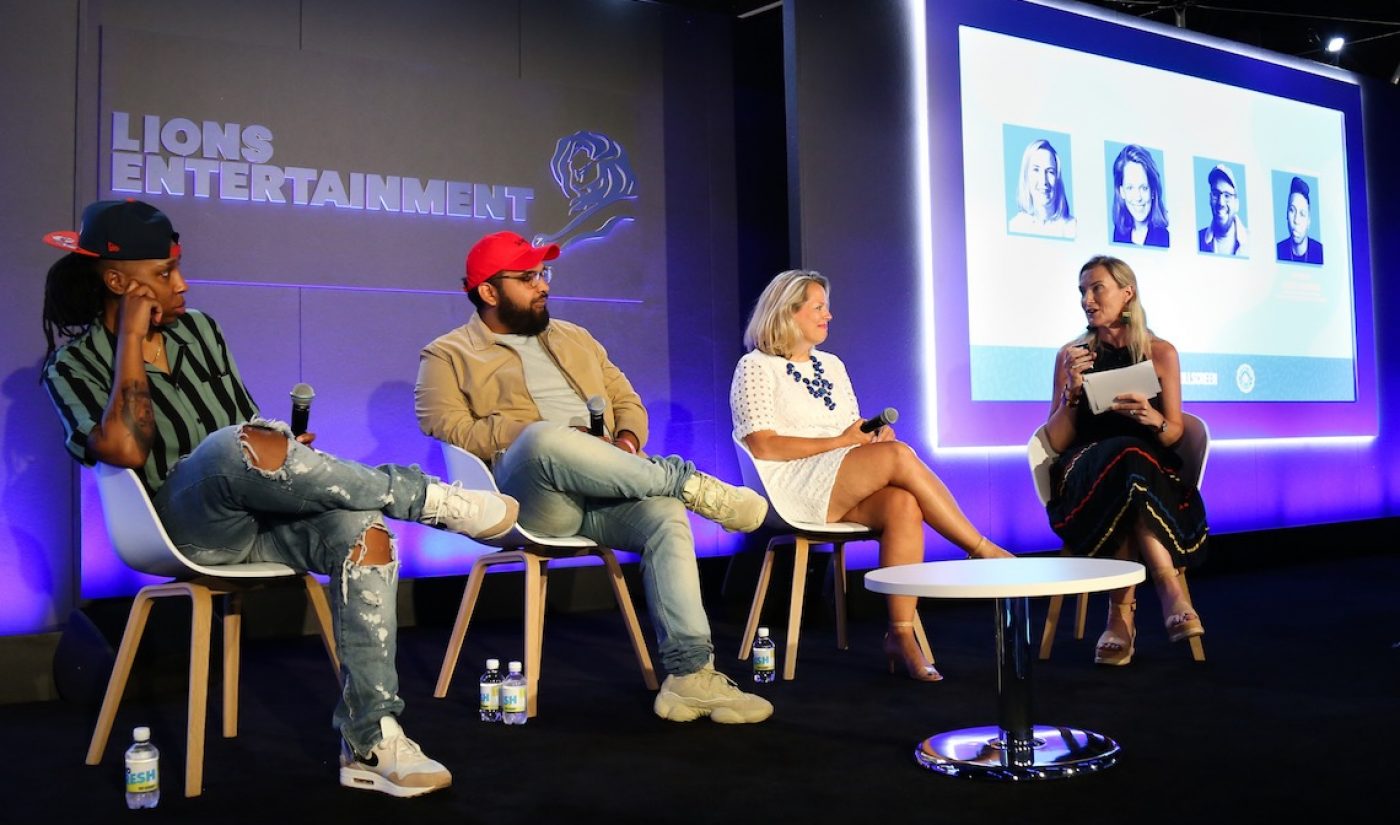The temptations for influencers to fake the size of their followings have never been bigger. Get more “followers” and brands will pay you more, at least in deals that care only about perceived reach, how many eyeballs will see the message posted on your various accounts. But brands and agencies are getting smarter about the tell-tale signs of fakery. It’s starting to cost some influencers opportunities, while legitimate influencers need to look closer to make sure their followings are the real deal.
Follower fraud is just one corner of a metastasizing global cultural conversation about what’s true and what’s fake online. Everywhere I look, we’re discovering more and more about the cost of false. But all these conversations make it harder and harder to trust just about anything we’re seeing online.
An issue of trust.
Just this past week, Twitter CEO Jack Dorsey and Facebook COO Sheryl Sandberg appeared before two Congressional committees to talk again about their fight against fakes, how they decide who gets to be on their platforms and much else. There’s a rising cry in Congress and beyond to more intensely regulate the tech giants, though I remain skeptical about whether regulating speech on private networks is something the government should be doing.

Subscribe to get the latest creator news
That said, the tech giants are responding to public pressure in many ways.
Twitter shut down millions of fake accounts, totaling 6% of its user base, earlier this year, and Facebook said in May it had closed 583 million suspect accounts in just one quarter. Google, which made the remarkably ill-advised decision not to send its CEO to appear before Congress this past week amid discussion of much heavier regulation, has had plenty of issues too. Last month, Facebook, Twitter and Microsoft disclosed they’d taken down hundreds of accounts and sites tied to Russia and Iran that were trying to manipulate U.S. elections or infiltrate anti-Trump conservative organizations.
It’s starting to affect how we deal with online experiences of all kinds. A recent Pew Research Center report says as much as 44% of teens are disconnecting from Facebook. Already, 60% of teens told Pew, they believe that excessive screen time is a “major problem” for their generation. More than half are trying to find ways to reduce their engagement. That’ll only accelerate when you don’t trust what you’re seeing online. It’s a huge challenge for the social-media giants, regardless of what Congress decides to do.
At Cannes Lions in June, one of the world’s biggest advertisers, Unilever, said it no longer would do deals with influencers who buy followers. Expect that position to become increasingly common among other brands and the agencies that represent them.
Telltale signs of fakery.
They’re tapping tools like those mentioned in a white paper, Fighting Follower Fraud, released this past week from Fullscreen and CreatorIQ, which found three key flags for possible follower fraud.
Building on top of a January New York Times investigation of follower fraud, the white paper identified three factors that should raise red flags when analyzing an influencer’s account for fakes:
- Audience Location Percentage. Some countries, such as Brazil and Indonesia, are home to many fake-follower farms. If an influencer from another country has a big following from one of those kinds of countries, it’s time to take a closer look.
- Engagement rate. Very low engagement rates on a given platform (“very low” varies by platform) suggest the influencer has a lot of fakes on that account.
- Follower growth. Is the influencer showing big growth spikes, particularly at odd times not tied to the release of a piece of viral content? Does the follower growth also bring a jump in engagement? If not, new followers are probably mostly fake.
CreatorIQ Head of Product Michael J. Lambie cautioned that the flags are just a starting point. Once the data turns up a suspect account, humans need to ask additional questions. Sometimes, there’s a reason an influencer has a big following from, say, the Philippines (a big site for fake farms), where an American actress had legitimately built a big following from years of appearances.
“She had become a big star there,” Lambie said. “She did nothing fraudulent. She won the hearts of the people in that country.”
That’s why using data to screen for fakes is only the beginning, said Maureen Polo, Fullscreen’s SVP, Brand Studio.
“The beauty of the way we approach it at Fullscreen is that it really is this science-based and human-based approach,” Polo said. “There’s also this human element, to look at engagement. Otherwise we’re just faking it, too.”
I also talked recently with James Creech, CEO of Paladin Software, which advises agencies on influencer campaigns. He agreed with the usefulness of the CreatorIQ/Fullscreen flags, and added a couple of additional warning signs of his own:
- The ratio of followers to followed. If an account follows far more than are following it, give it a closer look.
- Posting consistently, and about consistent topics. Some accounts post about wildly different topics, sometimes in different languages or from different locations.
Detecting fakes is most difficult with micro-influencers, as well as with what I’d call nano-influencers, the people with as few as several hundred followers who are being courted by game companies and others, Creech said. “You can’t be sure who they’re reaching,” Creech said. “Is it just their friends, or vanity follows and likes?”
Data-based screening seems to work best with more scale, when tracking influencers with at least 10,000 followers. But such screening is already costing some influencers deals, Polo and Lambie said, particularly at the “mid-tail” level of 50,000 to 200,00 followers.
That said, even at the biggest levels, some influencers are better than others at actually influencing their followers to take a course of action. The red flags can be a starting point in evaluating that ability too.
“The people who are more fraudulent tend to be less participatory,” Lambie said. “Followers is more of a vanity metric for those people.”
Even influencers working in good faith have to look carefully at who’s following them, because brands are increasingly wary about doing deals with influencers who have questionable audiences.
“What’s the quantity of personal stories shared by the creator?” Polo said. “A lot of times, our clients come to us asking about some person who has a huge following. We’ve gone back and said, ‘Don’t consider them influencers.’”
Brands are getting smarter about who they’re doing deals with, and what they’re paying for.
For instance, a company that distributes only in North America, say, doesn’t want to pay an influencer with a huge following mostly in Asia or Europe. Brands are also evolving the measurements of success in their campaigns, which will affect which influencers get deals.
“What’s the watch time, what do the metrics look like?” Creech said. “If you are a U.S. brand trying to reach women 18 to 34, you want to make sure you’re advertising with influencers who natively reach that group of influencers.”
Both Lambie and Creech said brands are increasingly ditching metrics such as reach, the raw number of followers an influencer has.
It makes sense to me. Reach is really a vestige of advertising on TV, radio and newspapers, where advertisers had little useful information about who their audience actually was. For decades, advertisers relied on broad-brush measurements such as CPMs and circulation, with little way to tell whether any individual consumer had seen and acted upon an ad. In an increasingly addressable universe of advertising (even in TV with ATSC 3.0 technologies and online video), that’s all changing.
The best influencers for brands, Polo said, are the ones who understand the value of their real, legitimate audience and tend to it carefully.
“Their Holy Grail is their audience,” Polo said. “It’s not a pay for play. This is what their mission is. For the creators we recommend, we want to make sure they’re not just looking to get more followers.”
One thing’s for sure. As we get more skeptical about what we’re seeing online, those trying to ensure we’re seeing only real stuff, from real people, are finding more and more challenges weeding the fakes from the authentic. But on this question so much else will rely.
“There’s a long way to go, and it’s a bit of a cat-and-mouse game,” said Creech. “Every time a platform or companies like ourselves make advances (in screening fakes), the impostors get a little smarter.”








